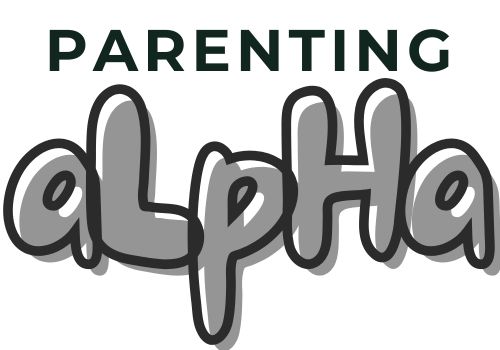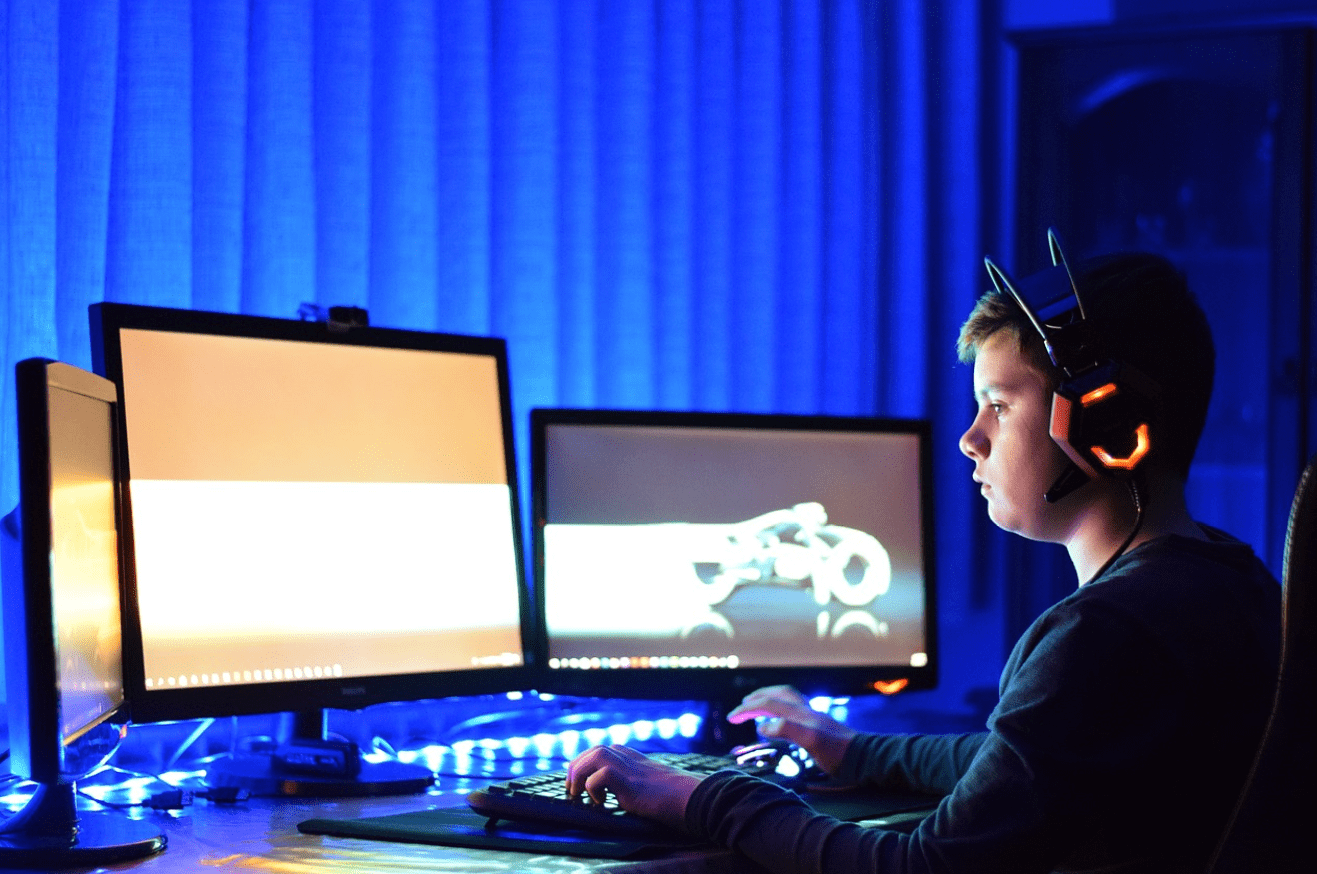Today, screens and the vast computing activities have become a central part of daily life in most of our homes. They offer a seemingly endless array of entertainment, education, and social interaction. These include the engaging challenges of video games, the vibrant interactions on social media, and the diverse world of movies and cartoons.
However, with these opportunities come potential risks. The immersive nature of gaming and the constant connectivity of social media can lead to excessive use, while movies and cartoons might contribute to physical inactivity or skewed perceptions of reality.
By understanding the impact of our digital habits, we can better leverage technology for its benefits and mitigate its risks. Only then, can we promote a healthier and more fulfilling digital lifestyle.
1. Games: The Double-Edged Sword of Fun and Focus

– The Upside: Cognitive Growth and Social Connection
Gaming is a popular pastime, especially among children and teenagers. Certain games, particularly those that require strategic thinking and problem-solving, can significantly enhance cognitive skills.
Elsewhere, fast-paced games improve hand-eye coordination and reaction times, making them more than just a source of entertainment.
Multiplayer games offer another benefit: social interaction. In a world where physical gatherings are often limited, online gaming can keep friends connected, fostering teamwork and communication. For adults, games can also serve as a stress reliever, offering a temporary escape from daily pressures.
– The Downside: Addiction and Isolation
However, the appeal of gaming can quickly turn into addiction. The immersive nature of games, particularly those designed to be endlessly engaging, can lead to excessive screen time.
This not only detracts from other responsibilities, such as homework or household chores, but can also result in social isolation. While players may interact with others online, they might neglect face-to-face relationships.
Moreover, the content of some games, especially those with violent themes, raises concerns about their impact on behavior and mental health. Prolonged exposure to such content can desensitize players to violence and may contribute to aggressive tendencies.
Additionally, extended gaming sessions often disrupt sleep patterns, leading to fatigue and decreased productivity.
2. Social Media: Connecting and Disconnecting

– The Upside: Staying Connected and Informed
Social media has revolutionized the way we communicate and access information. Platforms like Facebook, Instagram, and Twitter allow us to stay in touch with friends and family, even when miles apart. They also provide a space for creative expression, whether through photography, writing, or video production.
For many, social media is a valuable source of news and educational content, offering insights into current events and diverse perspectives.
It also promotes community, bringing together people with shared interests or experiences, such as parenting groups or hobbyist communities.
– The Downside: Mental Health Risks and Privacy Concerns
Despite these benefits, social media is not without its pitfalls. The constant comparison to others’ seemingly perfect lives can lead to feelings of inadequacy, anxiety, and depression.
Cyberbullying is another significant issue, particularly among younger users, contributing to a rise in mental health problems.
Privacy is another concern. The vast amount of personal information shared on social media can be exploited by cybercriminals or used for targeted advertising, raising ethical questions about data use.
Furthermore, the addictive nature of social media, with its endless scroll and constant notifications, can be a major distraction, reducing productivity and focus.
3. Movies and Cartoons: Family Entertainment

– The Upside: Education and Cultural Awareness
Movies and cartoons are staple sources of entertainment, providing relaxation and a break from reality. For children, educational cartoons can be a fun way to learn new concepts, while documentaries and historical films offer valuable insights for adults.
Beyond education, movies and cartoons also serve as a window into different cultures, broadening our understanding of the world. They can inspire creativity, whether through imaginative storytelling or stunning visual effects.
– The Downside: Passive Consumption and Unrealistic Expectations
However, the passive nature of watching movies and cartoons can contribute to physical inactivity, especially when viewed for extended periods. This is particularly concerning for children, who need regular physical activity for healthy development.
Moreover, not all content is suitable for children. Exposure to inappropriate themes, such as violence, explicit content, or unrealistic portrayals of relationships, can negatively influence behavior and attitudes, especially in impressionable minds.
The portrayal of idealized lifestyles and body images in movies and cartoons can also create unrealistic expectations, leading to dissatisfaction with one’s own life or appearance.
Other Computing Activities for Children at Home

4. Educational Software for Enhanced Learning
The Upside:
- Interactive Learning: Educational software provides interactive and engaging ways to learn new concepts, making complex subjects more accessible and enjoyable for users of all ages.
- Personalized Experience: Many educational tools adapt to the user’s learning pace and style, offering a customized educational experience that can address individual strengths and weaknesses.
- Skill Development: These tools often cover a broad range of subjects, from language skills to mathematics and science, helping users acquire new knowledge and skills that are valuable both academically and professionally.
The Downside:
- Screen Time Overload: Even educational activities can contribute to excessive screen time if not managed properly, potentially leading to eye strain and decreased physical activity.
- Limited Social Interaction: Focusing heavily on educational software can reduce opportunities for face-to-face social interaction, which is essential for developing communication and interpersonal skills.
- Distraction Risk: Some educational tools, particularly those with game-like elements, may inadvertently distract users from more focused study or other important tasks.
5. Coding and Programming for Building the Future
The Upside:
- Problem-Solving Skills: Learning to code fosters logical thinking and problem-solving abilities, which are applicable across various domains and critical for future career opportunities.
- Future Career Opportunities: Coding skills are highly sought after in the job market, making them a valuable asset for career development and opening doors to numerous technology-related professions.
- Creativity and Innovation: Programming encourages creativity through the development of new applications, games, and solutions, empowering users to bring their ideas to life.
The Downside:
- Requires Discipline: Self-directed learning in coding requires strong discipline and motivation, and without proper guidance, users may struggle to make progress or stay engaged.
- Complexity and Frustration: Coding can be challenging and may lead to frustration, especially for beginners. It requires patience, persistence, and a willingness to troubleshoot and debug.
- Screen Time: Like other computing activities, coding involves prolonged screen time, which can contribute to eye strain and physical discomfort if not balanced with breaks and physical activity.
6. Creative Software for Innovation at Home
The Upside:
- Creative Expression: Creative software such as music production tools, graphic design programs, and video editing apps provides users with platforms to explore and express their creativity, leading to the creation of original content and projects.
- Skill Enhancement: Using creative software can develop technical skills and artistic abilities that are increasingly valuable in various career fields, from media and design to technology and marketing.
- Empowerment and Achievement: Completing creative projects can be a source of personal satisfaction and empowerment, boosting confidence and a sense of accomplishment.
The Downside:
- Isolation: Extensive time spent on creative projects might lead to social isolation if users become engrossed in their work at the expense of social interactions and relationships.
- Time Consumption: Engaging deeply with creative software can be time-consuming, potentially leading to neglect of other important tasks or responsibilities.
- Cost and Accessibility: High-quality creative tools can be expensive, which may limit access for some users. Additionally, mastering complex software can require significant time and effort.
Striking the Right Balance in Varying Computing Activities

A simple summary of the good and bad of common computing activities at home:
- Gaming: Fair when used in moderation, as it can improve cognitive skills and offer social interaction. Bad when overused, as it can lead to addiction, social isolation, and health issues.
- Social Media: Fair for staying connected and accessing information. Bad due to potential mental health impacts, privacy risks, and distractions from productivity.
- Cartoons: Fair for educational and entertainment value, stimulating creativity, and learning. Bad if it leads to physical inactivity or exposure to inappropriate content.
Overall, the impact of these activities varies based on their usage, content, and the balance maintained with other aspects of life. Moderation and mindful consumption are key to maximizing benefits while mitigating risks.





Leave a Reply